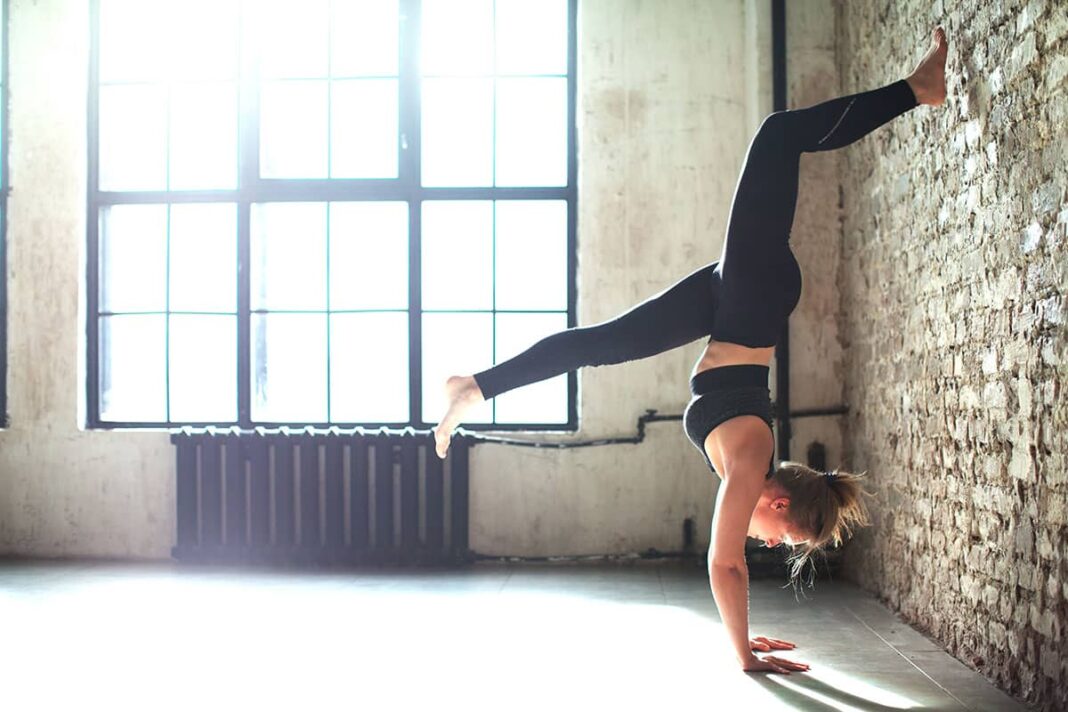In your CrossFit box, in the yoga studio, or on social media, you see it everywhere—the handstand. And rightly so, because it not only looks impressive but is also the absolute supreme discipline in bodyweight training. The handstand is an intensive full-body exercise and requires not only strength in the arms, shoulders, torso, and lower body but also mobility, the right mindset, and a lot of discipline.
If you find it difficult to get into the overhead position, or you can hold it but only against the wall or bent like a banana, we have three tips and exercises for you to help you perfect your handstand.
1. Improve Mobility for a Perfect Handstand
A common limiting factor is limited shoulder mobility. And even though the mobility portion is often not the most popular part of the workout, it is still essential if you want to perform well. This doesn’t just apply to the handstand, but shoulder mobility is especially important here and forms the foundation. Because if you can’t fully extend your shoulders, you’ll never be able to form a straight line with your body in the handstand. You can test your shoulder mobility very easily: Stand with your back against a wall, feet about a foot’s width apart, and knees slightly bent so that you can press your back completely against the wall. Stretch your arms straight out from you, palms facing the floor. Then try to bring your arms to the wall and stretch them straight up, still making sure not to leave a gap between your back and the wall. If you are unable to do this, it could be a sign of limited shoulder mobility.
There are many exercises you can do to improve your shoulder mobility. For example: Sit on your heels, bend forward, and place your forearms on the floor. Stretch your right arm out in front of you and as you exhale, raise the arm as far as you can, palm facing up. Hold the position for one breath, bring the arm back to the floor, and repeat the exercise ten times before switching sides. Learn more about shoulder mobility exercises.
Also important: Your spine should be well warmed up, as should your hips. A helpful mobility exercise is the so-called World’s Greatest Stretch.
From the sprinter position with your left leg in front, turn your upper body to the left and stretch your arm towards the ceiling. Then turn back to bring your right elbow to the inside of your right ankle. You can also bring both hands (or fingertips) to the floor and stretch your front leg. Repeat these three steps at least five times and then switch sides. Now it’s time for the strength exercises—finally. Explore more hip mobility exercises.
2. Build Core Strength with Hollow Holds
This intensive isometric core exercise strengthens your core like no other. It also strengthens your shoulders and legs, making it the perfect support for your handstand. From a supine position, lift your arms, shoulder girdle, and legs while keeping your lower back in contact with the floor. Hold the exercise for as long as you can control it and repeat it for three to five rounds.
Muscles: Abdominal muscles, shoulders, thighs Note: If you cannot hold the position without arching your back, you can either stretch your arms out past your body instead of overhead, or you can bend your legs slightly. Find out more about the benefits of Hollow Hold.
3. Strengthen Shoulders with Pike Push-Ups
This exercise prepares your shoulders for the handstand. The starting position may look familiar to you from the downward dog. From this position, guide your head towards the floor by bending your elbows. Then, in a controlled manner, push yourself back to your starting position and repeat the exercise for eight to twelve repetitions. Once you have managed three rounds of twelve repetitions, you can increase the difficulty by raising your feet. You can use a plyo box for this or start smaller and use a stepper to help you.
Muscles: Shoulder muscles, triceps Note: Your elbows should stay close to your body throughout the exercise. Learn the correct form for Pike Push-Ups.
A handstand doesn’t perfect itself, and certainly not overnight. Be patient with yourself, integrate the right supporting mobility and strength exercises into your training plan, and above all, stick with it! Then nothing will stand in the way of your perfect handstand.

